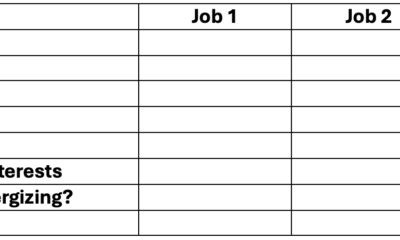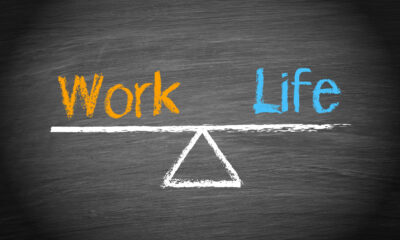Finance
Equipment Lease Calculator: Calculating Your Lease Payment

By using an equipment lease calculator, you can determine the costs associated with an equipment lease, including the monthly payment amount, buyout cost, and residual value. Our free equipment lease calculator can provide you with all of that information and is designed to also supply figures for three lease structures: fair market value (FMV), $1 buyout, and 10% buyout.
If you’re considering an equipment lease, I recommend working with a lender like Lendio. It’s a broker with over 75 partnering lenders that can match you to financing options suitable for your business needs. It has flexible credit score, time in business, and revenue requirements and offers competitive starting rates with a high level of personalized service.
Visit Lendio
Equipment Lease Calculator Inputs
To calculate your equipment lease payment, you’ll need to plug the following figures into our equipment leasing calculator.
Lease Structure
You can use our calculator to determine the costs associated with the following equipment lease structures:
- FMV: This allows you to purchase the equipment for its FMV at the end of the lease term.
- 10% buyout: This is similar to an FMV lease, but it instead allows you to purchase equipment at the end of the lease for 10% of its value.
- $1 buyout: As the name suggests, it allows you to purchase equipment at the end of the lease for $1.
Equipment Price
The figure entered here should be the value of the equipment you are getting. In some cases, the leasing company you work with may provide the option to include other administrative costs with the total equipment price, something that can impact your monthly lease payments.
Down Payment
This is the dollar amount you’ll be paying upfront for the equipment lease at signing. While not always required, some companies will request a minimum down payment percentage based on the price of the equipment. This can generally range anywhere from 10% to 30%, depending on the lender and your qualifications.
For example, a 10% down payment on equipment valued at $100,000 would equate to a $10,000 down payment.
Life of Equipment (in years)
This is the expected useful lifespan—the amount of time the equipment is expected to last—of the equipment being obtained. This is often determined by the type of equipment being leased, the industry you operate in, and the manufacturer’s own estimates and specifications.
Interest Rate
This is the interest rate you will be charged for the lease, which represents the cost of borrowing and is set by the lender. Rates are often determined by the type of equipment you are leasing and your own qualifications. Common qualification requirements include your credit score, time in business, and the strength of your finances.
Lease Length (number of months)
This is the length of time you will be making payments and also the time you’ll be allowed to retain possession and use of the equipment. At the end of this period, you’ll be expected to return the equipment to the leasing company or manufacturer. However, some leases provide the option to renew, extend, or purchase the equipment.
Equipment Lease Calculator Outputs
Once you’ve entered the required inputs into the equipment lease payment calculator, there are various outputs that provide the details regarding the cost of your equipment lease.
Residual Value
This represents how much the equipment will be worth at the end of the lease term. This figure can be determined by the specific type of equipment, information provided by the manufacturer, or guidelines set forth by the leasing company. Equipment with a long expected lifespan will generally have a higher residual value.
Monthly Lease Payments
This is the amount you’ll be obligated to pay for the equipment each month until the end of the lease term. This is evaluated by factors such as the total equipment price, down payment provided, length of the lease term, lease structure, and applicable interest rate.
Missing lease payments could result in the manufacturer or leasing company taking possession of the equipment, so it’s important you ensure you can afford the payments
Total Cost of Lease
This is the total amount you’ll spend on payments for the duration of your lease inclusive of principal and interest. This can be calculated by taking your monthly payments and multiplying it by the length of your lease in months.
Total Cost of Buyout
This references the total expense you will have incurred if you decide to purchase the equipment at the end of the lease. This figure is calculated by taking the sum of the monthly lease payments and the residual value of the equipment.
Equipment Lease Example
Equipment lease costs can vary based on a wide variety of factors and can look different depending on the type of equipment and lease terms you choose. To demonstrate what this might look like, the sample below illustrates how a difference in just the structure of the lease can impact a wide range of costs.
- Equipment price: $50,000
- Down payment: $10,000
- Life of equipment: 15 years
- Interest rate: 8%
- Lease term: 48 months
As you see in this example, FMV offers the lowest monthly payment and the lowest total cost of the lease. However, if you decide to purchase the equipment, it has the highest buyout cost. The highest monthly payments belong to the $1 buyout lease—but its total cost of buyout is the lowest.
Equipment Lease Considerations
You should first determine whether or not an equipment lease is the best option for your business and that it fits within your budget. It’s worth using an equipment lease cost calculator to estimate your payment beforehand. As shown in our example above, different lease structures can result in varying costs.
Also, consider the strength of your qualifications, as it can impact your likelihood of getting approved and the rates and terms you get. When looking to secure equipment leasing, providers typically evaluate applicants based on similar qualification criteria used for loans. Factors such as credit score, time in business, and business revenue are commonly reviewed to assess eligibility. To enhance your chances of approval at competitive rates and terms, it’s essential to understand how to navigate the process effectively. Our comprehensive guide on securing a small business loan offers valuable recommendations on improving your approval odds.
### Frequently Asked Questions (FAQs)
#### What are the different structures of leases available?
There are several common structures of equipment leases, including the Fair Market Value (FMV) lease, 10% option lease, and $1 buyout lease. Less common options like Terminal Rental Adjustment Clause (TRAC) and 10% Purchase Upon Termination (PUT) leases are also available.
#### Is it better to lease or buy equipment?
The decision to lease or buy equipment depends on various factors. Leasing might be preferable if you frequently need to upgrade equipment, lack a substantial down payment, or prefer manageable monthly payments. Buying equipment could be more cost-effective in the long run if you plan on using it for an extended period and aim to minimize ownership costs.
#### Where can I get an equipment lease?
Equipment leases are offered by numerous institutions, including banks, credit unions, online lenders, and business loan brokers. If you’re unsure where to start, refer to our guide highlighting the best equipment leasing companies to help you identify a suitable lender.
### Bottom Line
Opting for an equipment lease over a loan can lead to lower monthly payments and cater to short-term needs. However, it’s crucial to calculate the total costs involved to ensure affordability. Consider whether you intend to purchase the equipment at the lease term’s end or return it, as this decision will influence your choice between leasing and buying. Understanding the various lease structures available can aid in selecting the most suitable option for your business needs.
-

 Professional Development1 month ago
Professional Development1 month agoDrawing up your strategy
-

 Personal Growth2 months ago
Personal Growth2 months agoSucceeding as a ‘parentpreneur’: Top tips
-

 Videos2 months ago
Videos2 months agoGreat Leaders INSPIRE Others To Do Great Things
-

 Productivity1 month ago
Productivity1 month agoHow to Increase Remote Work Productivity
-

 Productivity2 months ago
Productivity2 months agoTips for Boosting Work Productivity
-

 Productivity2 months ago
Productivity2 months ago5 Ways to Increase Your Personal Assistant’s Productivity
-

 Leadership1 month ago
Leadership1 month agoHow to Tackle Big Challenges
-
Leadership1 month ago
Cutting Through the Clutter of Internal Communications























